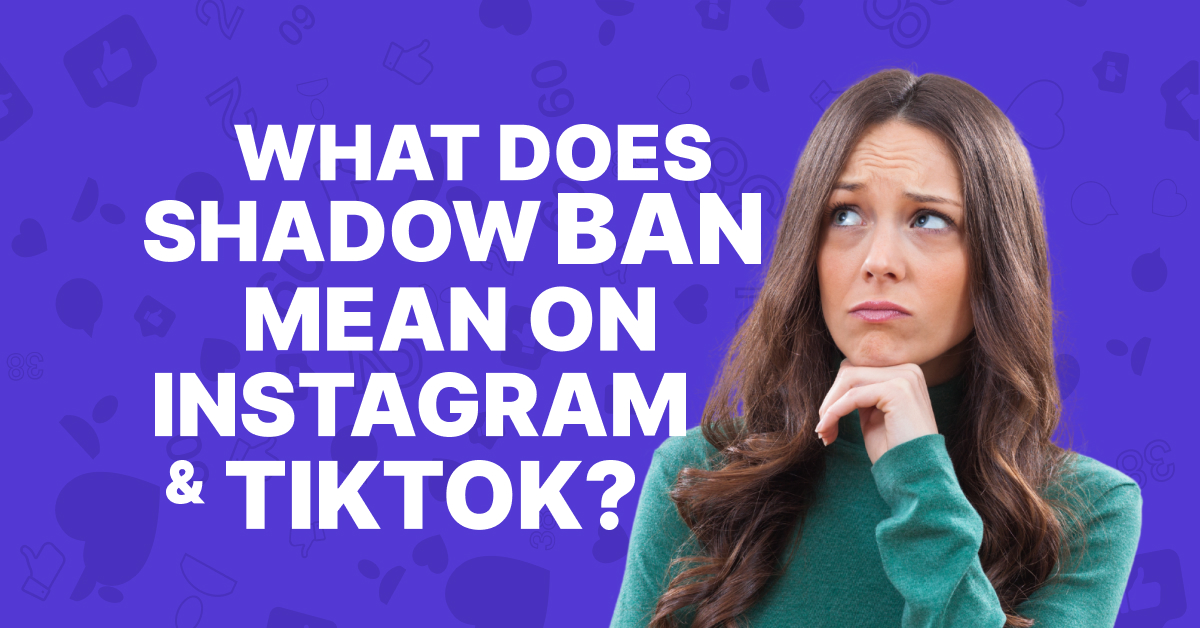Shadow banning is a term that has gained significant traction among social media users, particularly on platforms like Instagram and TikTok. But what exactly is a shadow ban, and how can it affect your social media presence?
What is a Shadow Ban?
Shadow banning, also known as ghost banning or stealth banning, is believed to be a tactic employed by social media platforms to filter out content that doesn’t comply with their community guidelines or terms of service, without outright banning the user.
Unlike traditional bans, where users are explicitly informed about the restriction or removal of their accounts, shadow bans silently limit the reach of the content (aka, the platform will never tell you if you’ve been shadow banned).
- On Instagram, this might mean that a user’s posts do not appear in hashtags or the Explore page.
- On TikTok, it could result in videos not being recommended to other users outside of the creator’s existing followers.
What Are The Signs of a Shadow Ban?
Identifying a shadow ban can be challenging due to its discreet nature.
What a Shadow Ban Looks Like on Instagram:
- Instagram users might suspect a shadow ban if they notice a sudden and significant drop in engagement on their posts.
- Key indicators include your content not appearing in hashtags searches or your followers’ feeds.
- Checking your account status through Instagram’s insights or third-party tools can help confirm if you’ve been shadow banned.
What a Shadow Ban Looks Like on TikTok:
- On TikTok, the signs of a shadow ban can be slightly different.
- Users might notice their new videos fail to gain traction, or their content suddenly stops appearing on the “For You” page.
- TikTok’s algorithm is notoriously opaque, making it challenging to definitively determine a shadow ban, but sudden changes in performance metrics are telltale signs.
What Are The Criteria For Shadow Banning?
The exact criteria for what triggers a shadow ban remains unknown, with platforms typically refraining from publicly detailing their content moderation algorithms.
However, it’s widely speculated that behaviors such as the repetitive use of banned hashtags, posting content that borders on the platform’s guidelines on sensitive or controversial topics, or engaging in spammy activities could lead to a shadow ban.
Additionally, sudden surges in activity that resemble bot-like behavior might also trigger the platforms’ algorithms to restrict an account’s reach.
Strategies to Avoid or Lift a Shadow Ban
Recovering from a shadow ban involves a combination of patience and strategic adjustments to your social media practices. Here are a few tips:
1. Review and Understand Platform Guidelines: Make sure that your content strictly adheres to the community guidelines of Instagram and TikTok. Avoid posting anything that could be construed as borderline violating these rules.
2. Alter Posting Behavior: Take a short break from posting (including Stories and Reels) to reduce your posting frequency. The goal is to reset the platform’s perception of your account.
- Wait at least 2-3 days on Instagram.
- Wait at least 2 weeks on TikTok (about as long as the showdown ban period).
3. Engage Authentically: Focus on genuine engagement with your audience. Avoid using low-quality bots from unreliable vendors for likes, comments, or follows, as these can trigger spam filters.
4. Use Hashtags Wisely: Avoid banned or overly generic hashtags like “babe” “date” “girlsonly” “curvy” and (of course) explicit language. Also avoid stuffing each post with the maximum number of hashtags available to you.


One Response
Thank you I get it now